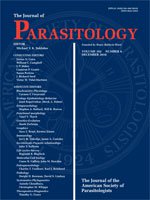Hemosporidians are a diverse group of blood parasites that infect terrestrial vertebrates worldwide, but there is variability in parasite prevalence and parasitemia with infections ranging from virtually inconsequential to lethal. In this study, we determined prevalence and parasitemia of avian hemosporidians in the Tufted Titmouse (Baeolophus bicolor; n = 81). Plasmodium and Parahaemoproteus were detected and quantified from blood samples using microscopy, polymerase chain reaction (PCR), and quantitative PCR. Thirteen mitochondrial cytochrome b lineages of hemosporidian parasites were found, including generalist and specialist lineages, and the data indicate that prevalence is 69.1% (Plasmodium 89.3%; Parahaemoproteus 7.1%; double infection 3.6%). However, parasitemia was low in all infected birds. Seasonally, parasite prevalence varied significantly, although prevalence and parasitemia were not associated with host sex, age, or health. Observations of infection in this naturally infected bird provide details on host susceptibility that are applicable to the understanding of hemosporidian parasites in other avian hosts.
How to translate text using browser tools
1 December 2016
Haemosporidian Prevalence and Parasitemia In the Tufted Titmouse (Baeolophus bicolor)
Kayla M. Fast,
V. Woody Walstrom,
Diana C. Outlaw
ACCESS THE FULL ARTICLE

Journal of Parasitology
Vol. 102 • No. 6
December 2016
Vol. 102 • No. 6
December 2016




